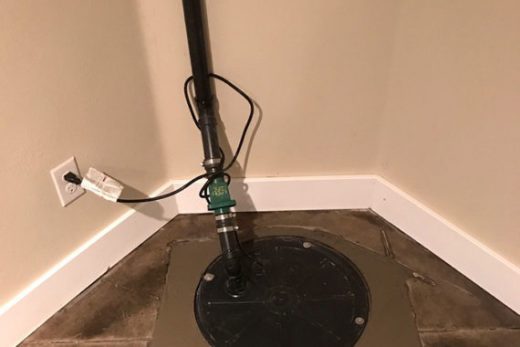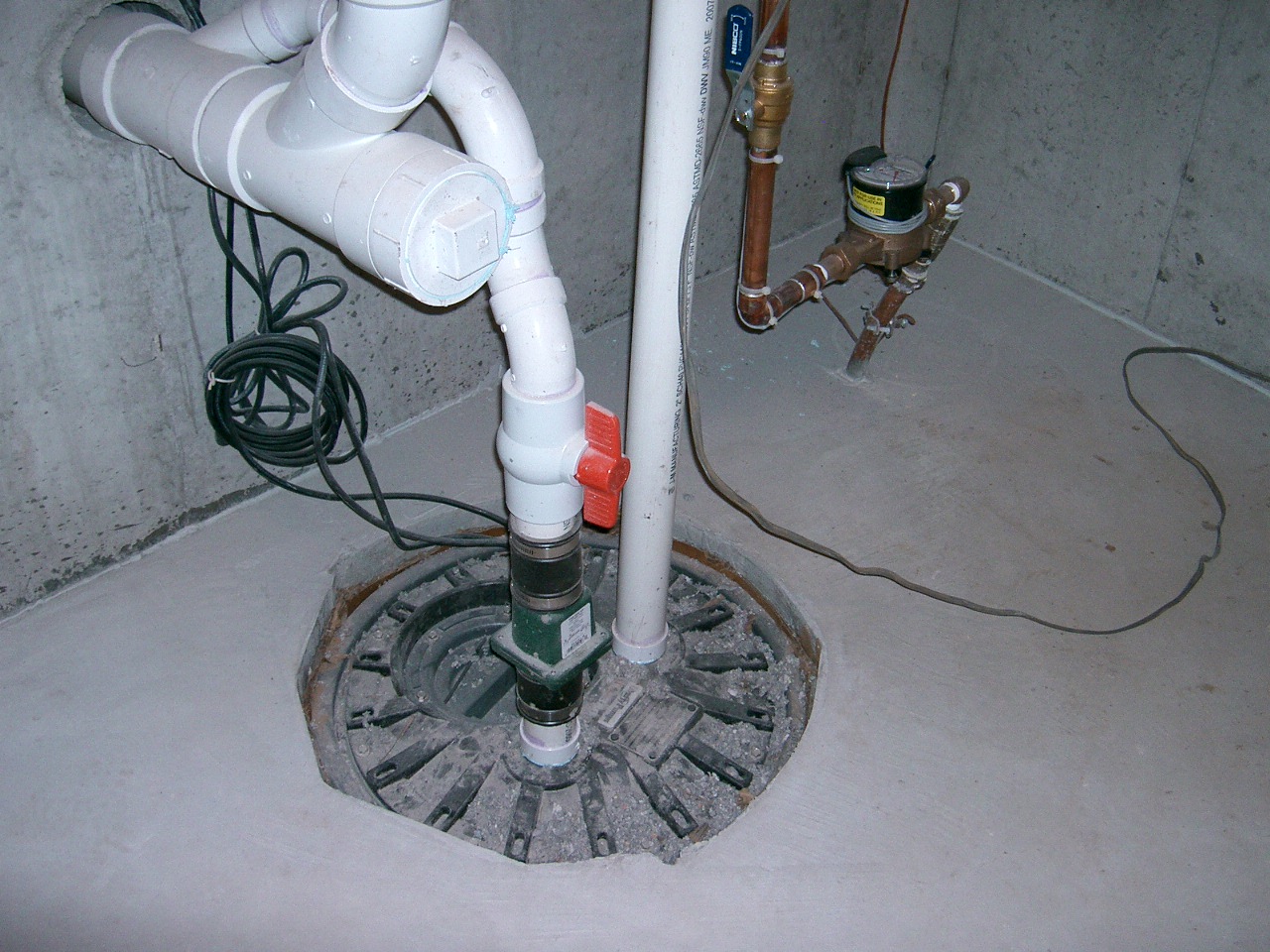Quick Methods to Clean a Sump Pump
Quick Methods to Clean a Sump Pump
Blog Article
The article author is making a few great points regarding How to Care for Your Sump Pump overall in the content on the next paragraphs.

Sump pumps are essential elements in lots of homes, specifically in locations susceptible to flooding or too much wetness. They assist protect against water damage by successfully eliminating excess water from cellars or crawl spaces. However, like any other appliance, sump pumps require normal upkeep to ensure they operate efficiently when required one of the most. Cleaning your sump pump is a vital part of its maintenance, and comprehending how to do it effectively can save you from expensive fixings and potential catastrophes.
Intro
Keeping a tidy sump pump is crucial for its correct performance and longevity. Disregarding this essential task can lead to blockages, malfunctions, and ultimately, water damages to your property. As a result, finding out exactly how to clean a sump pump is important for homeowners that count on these devices to maintain their basements completely dry and protected.
Recognizing the Sump Pump
Prior to diving right into the cleaning process, it's vital to have a fundamental understanding of just how a sump pump works. Generally mounted in a pit or container below the basement flooring, a sump pump contains numerous crucial elements, consisting of a pump, a float switch, and a discharge pipeline. When water builds up in the pit, the float button triggers the pump, which after that pumps the water out via the discharge pipe, away from the structure's structure.
Indicators of a Dirty Sump Pump
Understanding when your sump pump requires cleansing is important for stopping possible breakdowns. Some common indications that indicate a filthy sump pump include odd noises throughout operation, decreased water flow, and noticeable particles in the pit. If you notice any of these signs, it's important to clean your sump pump immediately to avoid any kind of additional concerns.
Getting ready for Cleaning
Before you begin cleansing your sump pump, it's important to take some security precautions. Beginning by shutting down the power to the pump to avoid any type of electrical mishaps. Furthermore, use appropriate protective equipment, such as gloves and safety glasses, to secure yourself from dust, particles, and possible pathogens.
Detailed Guide to Cleaning a Sump Pump
Shutting Off the Power
Begin by disconnecting the power supply to the sump pump to avoid any accidents while cleaning.
Getting Rid Of Debris and Dust
Utilize a pail or an inside story to eliminate any kind of noticeable debris, dust, or debris from the sump pit. Dispose of the debris properly to prevent it from blocking the pump or the discharge pipeline.
Cleaning the Pump and Drift Switch
Once the pit is clear of particles, thoroughly get rid of the pump from the pit. Inspect the pump and the float button for any type of indicators of damages or wear. Utilize a soft brush or cloth to clean up the surface areas and remove any type of collected crud.
Flushing the System
After cleaning up the pump and float button, purge the sump pit with clean water to get rid of any continuing to be dust or sediment. This will certainly help guarantee that the pump runs efficiently and successfully.
Looking For Proper Functioning
Before re-installing the pump, perform a quick examination to make sure that the float switch turns on the pump properly. Pour some water into the sump pit and observe the pump's operation. If every little thing is working appropriately, you can reassemble the pump and reconnect the power supply.
Maintenance Tips to Keep Your Sump Pump Clean
In addition to periodic cleaning, there are a number of upkeep pointers you can follow to maintain your sump pump in optimum problem:
Final thought
Cleaning your sump pump is an important facet of its maintenance and makes certain that it runs effectively when you require it the most. By following the steps laid out in this guide and including normal maintenance right into your regimen, you can prolong the life-span of your sump pump and secure your home from water damages.
6 STEPS ON HOW TO CLEAN A SUMP PUMP PROPERLY
UNDERSTANDING SUMP PUMPS
Your sump pump plays a crucial role in protecting your home by managing and removing excess water. It primarily functions as a “shield”, guarding your basement against the damaging effects of water accumulation. The pump is housed in a sump pit in the lowest part of your basement, and its job is to pump out any water that collects there.
During heavy rainfalls or when snow melts rapidly, water can infiltrate your basement, posing potential risks like flooding, structural damage, and harmful mold growth. Here, the sump pump springs into action, pumping out the intruding water and directing it away from your home.
SAFETY FIRST
Before cleaning, remember to prioritize safety. Disconnect the sump pump from the power source to prevent any accidental electric shocks. Also, wear sturdy gloves to protect your hands from any sharp or dirty components within the pump.
REMOVE THE SUMP PUMP
After ensuring your safety, the next step is to remove the sump pump from its pit. Doing this might require careful maneuvering as you don’t want to damage any pump components. Once removed, clean the sump pit to remove any accumulated debris or sludge.
INSPECT THE PUMP
Inspect the pump for any visible signs of wear or damage. Check the power cord, float switch, and impeller housing. If any components look worn out or damaged, consider replacing them to ensure optimal performance.
CLEAN THE PUMP
Thoroughly clean the pump with warm, soapy water. Make sure to rid it of any dirt, gravel, or other debris that might impede its performance. You can use a toothbrush to clean the small, hard-to-reach parts of the pump.
REINSTALL THE SUMP PUMP
Reinstall the pump into the sump pit Make sure it’s positioned correctly to remove the water effectively Once it’s back in place, reconnect it to the power source TEST THE PUMP
Finally, pour some water into the pit to ensure the pump works correctly. It should start automatically and begin pumping out the water; if it doesn’t, check the power source and the positioning of the pump.
Remember, while cleaning your sump pump is an essential part of home maintenance, hiring a professional plumber for a thorough inspection and cleaning at least once a year is also important. This will ensure that your pump is in optimal condition, ready to protect your home from potential water damage.
BEST PRACTICES FOR CLEANING SUMP PUMP DISCHARGE PIPES
Regular Inspection: Regularly inspect your discharge pipes, especially during heavy rainfall or snowmelt periods. Look for any signs of blockage or damage. Early detection of problems can prevent serious issues down the line. Periodic Cleaning: Over time, sediment and debris can accumulate in the discharge pipes, impeding the flow of water. Regular cleaning helps keep the pipes clear and functioning efficiently. You can use a high-pressure water jet to effectively clean the pipes. Insulation During Winter: In colder climates, discharge pipes can freeze, blocking the outflow of water. Protect your discharge pipes from freezing temperatures by insulating them with foam pipe insulation. This will ensure the sump pump can continue to discharge water even in freezing conditions. Proper Positioning: The discharge pipe should be positioned to direct water away from your home’s foundation. Improper positioning can lead to water seeping back into the basement. Ensure the pipe is long enough and angled correctly. Installation of a Check Valve: A check valve prevents water from flowing back into your sump pit after the pump has pushed it out. Installing a check valve helps maintain the efficiency of your sump pump and reduces the risk of flooding. Minimize Pipe Turns: Every curve or turn in the discharge pipe can decrease the efficiency of water flow. By minimizing turns and bends in your discharge pipe, you can increase the efficiency of your sump pump. https://www.fullspeedplumbing.com/how-to-clean-a-sump-pump-properly9999/

Do you really like more info about How To Effectively Clean A Sump Pump? Create a remark down below. We'd be pleased to hear your reactions about this review. We hope that you visit us again later on. You should pause to promote this post if you enjoyed it. We love your readership.
Quote Report this page